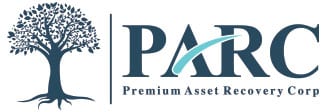2024 Strategies for Negotiating and Settling Medical Debt

RCM Best Practices Guide 2024
December 4, 2023
Understanding Medical Debt Collections: A 2024 Guide for Healthcare Providers
December 20, 2023A Fresh Look at Medical Debt Settlement
The issue of medical debt isn’t just a financial problem; it’s a matter that touches the lives of real people, affecting their well-being and peace of mind. With medical costs continually increasing, the financial strain is felt increasingly by both healthcare providers and patients. Add to this a policy landscape that’s undergoing shifts, potentially changing how we approach healthcare financing, and it becomes clear that old methods of medical debt negotiation and settling debts may no longer suffice.
In this climate of change and uncertainty, healthcare providers must be equipped with cutting-edge, practical strategies for medical debt negotiation and settlement. This is precisely what this blog post seeks to offer: a comprehensive guide aimed at healthcare providers intending to make the medical debt settlement process more efficient and compassionate.
Ideas Explored in This Blog
To begin preparing for 2024, we have compiled insights and actionable steps rooted in the present moment, with the flexibility to adapt to future changes. Our discussions will center around three key strategies:
- We’ll delve into the importance of maintaining transparent communication with patients
- We will then explore the benefits and logistics of offering flexible payment plans
- Finally, we will talk about the often-overlooked advantages of early intervention in the debt cycle.
These focal points can turn a challenging process into an opportunity for both financial recovery and strengthened patient-provider relationships.
The Importance of Clear Communication with Patients
In any form of debt negotiation, the initial conversation sets the stage. But unlike other debts, medical debts are often intertwined with emotional stress, making open, honest communication all the more crucial.
Clear communication involves more than sending bills on time or making collection calls. It extends to providing patients with understandable financial documentation, options for settlement, and perhaps most importantly, a sense of respect and dignity.
So, how can healthcare providers practice effective communication in 2024?
Utilize Technology for Financial Conversations
Today’s tech-savvy world offers a plethora of platforms that can be employed for clear and constant communication. Secure messaging apps, for instance, can be used to clarify bills or discuss payment plans. These digital options not only make interactions more convenient but also provide a written record for both parties.
Below are a couple noteworthy fintech startups that are making waves in the healthcare industry:
- Cedar (2016)
Cedar offers intelligent solutions for healthcare providers to manage the patient payment cycle. With a focus on improving billing operations and patient experience, Cedar has managed to raise $151 million in funding.
Its platform combines techniques from FinTech, consumer tech, and healthcare to provide a personalized billing experience for patients.
- WellPay (2019)
WellPay focuses on empowering consumers to manage rising healthcare costs, especially during times of crisis like the COVID-19 pandemic. Their platform, powered by machine learning, helps patients negotiate and manage their medical bills through zero-interest, zero-fees plans.
These startups illustrate the potential of FinTech to revamp the healthcare industry by eliminating inefficiencies and offering more effective payment and communication solutions.
By leveraging the power of FinTech, healthcare providers can simplify payment processes while improve communication with their patients, making it easier for both parties to navigate the complexities of medical debt negotiation.
Transparency Is Key
Being transparent about the full cost of medical services, including any potential additional charges, can significantly lower the chances of disputes later on. Offering a detailed breakdown of costs can help patients understand what they are being billed for, reducing misunderstandings and fostering trust.
By making an effort to communicate clearly and transparently, healthcare providers pave the way for smoother negotiations, quicker settlements, and a more positive relationship with their patients.
Offering Flexible Payment Plans and Options
The Shift to Flexible Payment Structures
One of the most effective strategies for settling medical debt is offering flexible payment plans and options. Traditional payment methods may not be feasible for every patient, especially those facing significant financial hardships.
Offering alternatives like installment plans, sliding scale fees, or deferred payment options can alleviate this burden and make it easier for patients to commit to a payment schedule.
Leveraging Fintech for Payment Flexibility
Emerging technologies, such as those offered by FinTech startups, can also play a role in this regard. Platforms that facilitate digital payments or offer zero-interest plans can be integrated into the existing financial infrastructure of a healthcare provider.
These technologies make it easier to customize payment plans to individual needs, making them more accessible to a broader range of patients. This improves the patient experience and increases the likelihood of debt settlement for the healthcare provider.
By offering these kinds of flexible payment structures, healthcare providers can mitigate the risk of debt delinquency and improve their cash flow. This strategy also adds a layer of convenience for the patient, strengthening the provider-patient relationship.
Benefits of Early Intervention in the Debt Cycle
Why Early Action Matters
Taking early action in the debt cycle is crucial. It helps reduce financial risks and offer a better experience for patients. Why wait for debts to pile up? Addressing them early on allows you to work on manageable solutions.
The Practical Benefits
One of the key advantages is reduced default (penalty) rates. Patients who understand their options early are more likely to commit to a payment plan.
Remember, the earlier you intervene, the more options you have. From interest-free plans to debt remediation, the choices are broad. You can negotiate favorable terms for both parties rather than taking drastic measures like sending accounts to collections.
Some patients may prefer to communicate with your practice using different means. By offering convenient and simple-to-use methods, as well as a wide range of ways to contact them, practices will be able to talk with and understand patients openly.
Establish Clear Communication Channels
The first step is to establish clear lines of communication with patients. Utilize multiple platforms like emails, text messages, and even postal mail to send out reminders for pending bills. The benefit? A diversified communication strategy reaches the patient in the most convenient ways, improving the likelihood of timely payments.
Ensure that your billing statements are simple and easy to understand. Complex or confusing bills often lead to delayed payments. A clear and straightforward invoice fosters quick action.
Implement Early Payment Incentives
Offer incentives for early payments, such as a small discount if bills are paid within a certain timeframe. This encourages patients to act fast, reducing the time your staff spends chasing down unpaid bills. It is also important to have a clearly defined escalation process. If a bill is not paid by X number of days, then an email is sent, followed by a phone call, and so on. Structured escalation removes ambiguity and streamlines the collection process.
Strengthening Patient-Provider Relationships
Early intervention also paves the way for better patient-provider relationships. Patients appreciate transparency and a helping hand in navigating their financial responsibilities. This both boosts patient satisfaction and increases the likelihood of future engagements.
Before a medical procedure, offer financial counseling to discuss costs and payment options. Patients are less stressed when they know what to expect, and counselors can help them identify the best payment options for their situation.
By making early intervention a standard practice, healthcare providers can create a win-win scenario. Not only is there an improvement in revenue collections, but there’s also the cultivation of a more compassionate healthcare environment.
Legal Preparations
While it’s a last resort, be prepared to take legal action for unpaid bills. Have all the required documentation ready and follow the legal guidelines strictly. Though it’s a step no one wants to take, it serves as a deterrent and underscores the seriousness of timely payments.
Healthcare providers can dramatically improve their early intervention strategies in the debt cycle by taking these specific, actionable steps. The result? Lower default rates, less time and resources spent on collections, and stronger patient-provider relationships.
Wrapping Up
Here, at the end of our journey through the labyrinth of medical debt negotiation, let’s remember why we first entered. As providers, your ultimate product is not a cleared bill but a healed patient. Understanding debt is another facet of understanding your customer. Through clear communication, you break down barriers that often result in defaulted payments.
Offering flexible plans isn’t a loss leader; it’s an investment in customer loyalty. Early intervention saves not just pennies on the dollar but also the incalculable cost of a damaged relationship.
In sum, mastering medical debt is less about short-term recoveries and more about long-term relationships. Build those successfully, and you’ll find that both your patients and your bottom line will be healthier for it.
Cited Resources & Further Reading
5 US FinTech Startups Reimagining the Healthcare Industry
The Consumer Financial Protection Bureau (CFPB) is a U.S. government agency responsible for safeguarding consumers in the financial marketplace. It focuses on transparent practices and consumer education to promote fairness.
Interested in knowing more about medical debt negotiation? The resources above offer not just tips, but proven strategies for ensuring that your revenue cycle is as healthy as the patients you serve.
To learn more about PARC and what we do, check out our blog post about Understanding Non-Recourse Debt Buyers.


